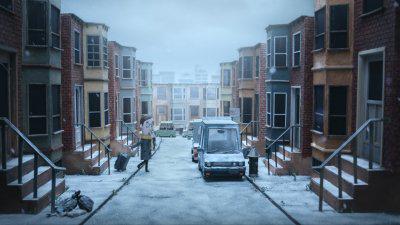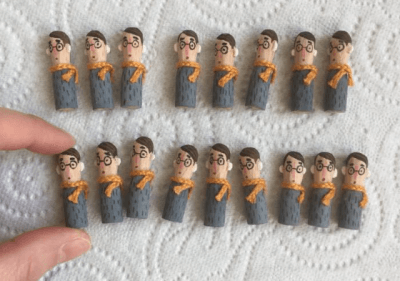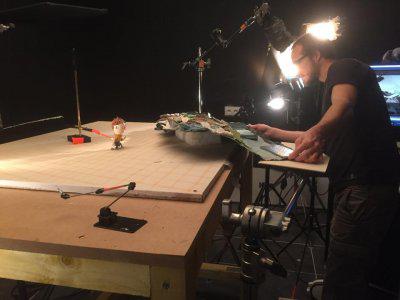Interview with Ru Kuwahata and Max Porter (‘Negative Space’)
Ru: I grew up in Japan watching a show called Dekirukana (translation: What Can We Make) which was a popular craft show that used recycled materials. Later in my childhood, I obsessively read Manga and I eventually started submitting my originals to publishers at age 12. (note: They are so embarrassingly bad). Those experiences of using my hands to make art and storytelling led to me studying at Parsons School of Design in NYC.
Max: I grew up in New York and, early on, a family friend introduced me to photography. My parents let me build a dark room in their basement bathroom and I dumped chemicals down the toilet without knowing that you’re not supposed to do that. In high school, I experimented with super 8 film and that led me to study Film/ Animation/ Video at Rhode Island School of Design. We met at an animation studio in NYC while working on a pilot for a TV series that never got made.
Firstly, we were interested in exploring how combining techniques could create something different than the sum of its parts, sort of like rock-and-roll. We looked at the compositing process as being similar to collage: you’re pulling parts from different sources to create a unified image.Secondly, our mixed-media approach was a practical consideration. Aside from sound, our previous films were made by the two of us over long periods of time, in between other work. Using hybrid techniques was a way to work with limited space and resources.
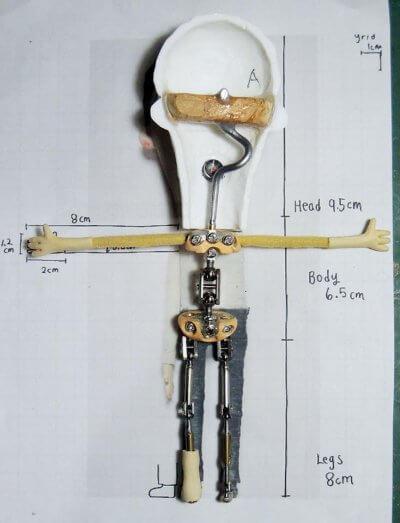
Negative Space was a full stop-motion production, though. We felt strongly that the tone of the original text demanded a more direct, authentic process and we wanted the chatter of cloth to be an important part of the visual language.We have been working together for over a decade and the way we split work naturally fell into place over time. We always work together on the writing, concept art and animatic, and in general, Ru guides the design, set/prop making and character animation. Max takes lead with the cinematography, editorial pacing, post-production and the animation of objects/effects. But our process is very organic and there’s quite a bit of back-and-forth throughout.
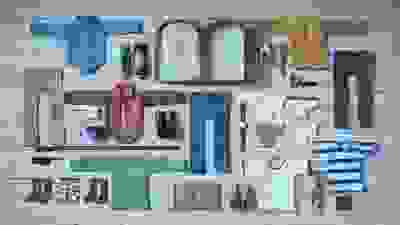
Other people tend to see those common threads more than we do, but we think when you come at your work from an honest place, an artistic identity emerges naturally. The way we see the world, the stories that interest us, our sense of texture and form, the colors we gravitate towards- because we’re making these choices over and over again, that becomes the common sensibility in the work.
In our projects, it’s important to us that a couch isn’t just any couch. The specificity of the pattern, the chips in the wood frame, and the stains in the upholstery, have all been chosen to give it a tactile identity and a history. If the audience feels like the couch belongs to someone and they feel like they can reach into the screen and touch it, it’s easier for them to relate to the person who is sitting on it.
Also, we gravitate toward art where the hand of the artist is present. Our friend once said that if you’re bringing mashed potatoes to a potluck, you should leave some lumps so that people know you made it by hand and didn’t just buy that crappy pre-made mix. We try to leave some lumps in our films.
A colleague of ours posted Ron’s poem on Facebook and we were touched by the humor and honesty of the text. We found Ron’s website and emailed him for a rights/ permission for an adaptation. Ron originally said he only wanted 50 bucks because he’d probably just bet it on horses at Santa Anita, but our producers at IKKI FILMS paid a bit more.
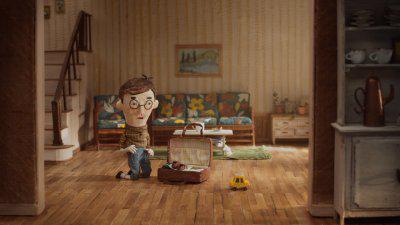
What was the hardest part of this film for you both?
For the most part, our previous films were made on our own. Negative Space, however, was produced with a team at IKKI FILMS and Manuel Cam Studio.Little wooden figures created as that you gifts for the team
It was important that the film feel personal and we were nervous that we wouldn’t be able to maintain that intimacy while working with other people. We doubled down on pre-production by preparing visual reference material and creating written explanations for all of our directorial decision, but at some point we realized that letting go a bit and encouraging our team to bring their own ideas and experiences to the film would only make the project better. The majority of the production happened at CICLIC Animation (Vendome, France) and IKKI Inc (Orbigny, France) where the team members lived with us during the week. This structure allowed us to become very close with the people we worked with and we ended up spending a lot time discussing our relationships to our families.
Physically, the hardest part was that we worked in 5 locations throughout the production. Stop motion film production is demanding enough already and to add all the packing and moving was quite draining. But when we look back, it was such a nice experience to be able to live in many parts of France! It was also fitting that we were making a film about packing and we had become expert packers in the process.
The film is beautiful and its wonderfully scripted, succinct narrative is just perfection. What was it like scripting and developing in the pre-production part of this film?
Ron’s poem is only 150 words, and because it was so minimal, we felt that there was enough space to bring something to story with animation. Still, it was a difficult balancing act to honor the simplicity of the text and bring something to it.For example: there’s one sentence in the text “By the time I was twelve, if he [dad] was busy I’d pack for him. Mom tried but didn’t have the knack.” Though it wasn’t said outright, we wanted to imply that there was friction between the mother and father. Originally, we showed more of the mother at this moment, but felt quickly that the narrative was expanding too much and losing its spine. We ended up framing mother below the eyes to indicate her presence while keeping the story focused on the relationship between the father and son.
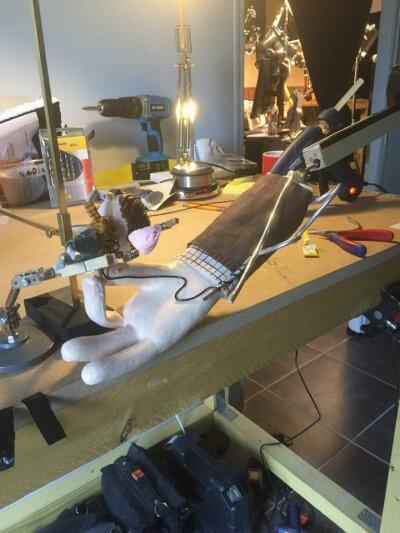
While applying for grants in France, we were forced to really consider our intentions and communicate those ideas in writing and references. In past projects our decisions had come about more intuitively, so this analytical way of working was different for us. Those documents, however, became the foundation for the storyboarding phase and a touchstone during production. It was helpful throughout the process to refer back and remember that we were inspired by Ron Mueck’s sense of scale or Yasujiro Ozu’s compositional framing, and what feeling we wanted to get across with each visual metaphor.
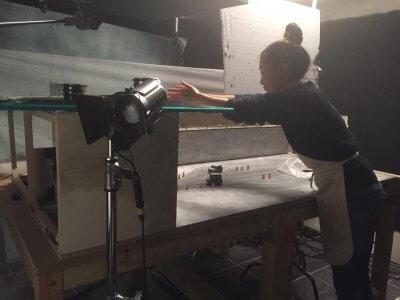
Animating Snow
Your previous films have done well, and been to many festivals, with Negative Space picking up a few awards at this years Annecy festival and already been selected for many others how do you feel about the response to your films?
Premiering at Annecy and picking up awards is definitely a great start for the festival circulation. We’re excited for the journey that the film will have for the next year or two and hope to participate in some festivals to meet new and old friends.That being said, once we put something out into the world, it takes on a life of its own and we have little control over how it’s received. We talk a lot about how to define success internally, because relying on external accolades can be crushing.
We’re writing a feature that we’ve been talking about for years, teaching animation classes and developing a new short.


